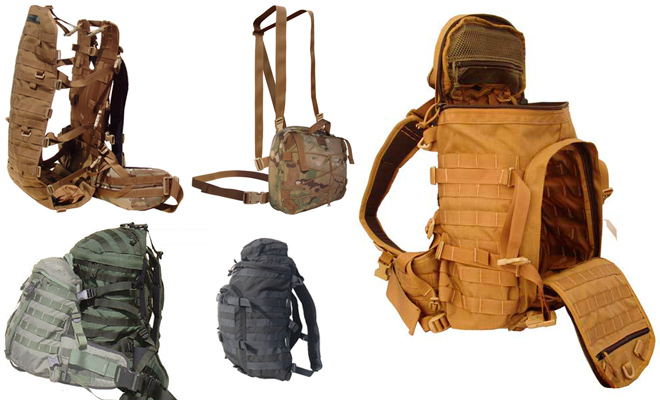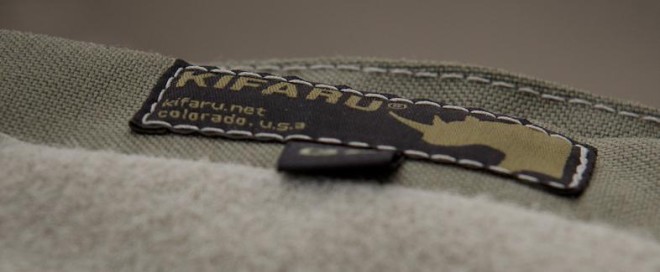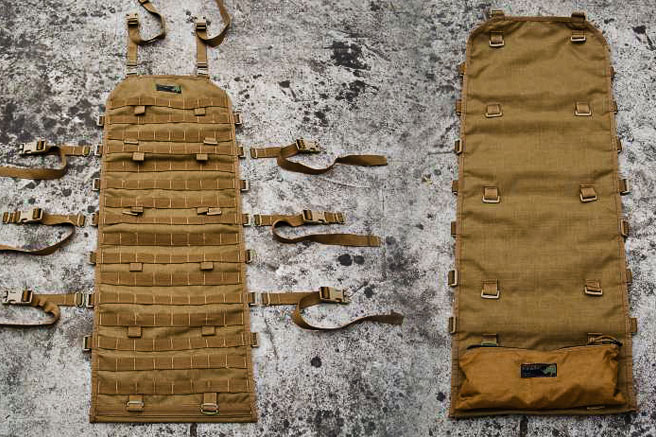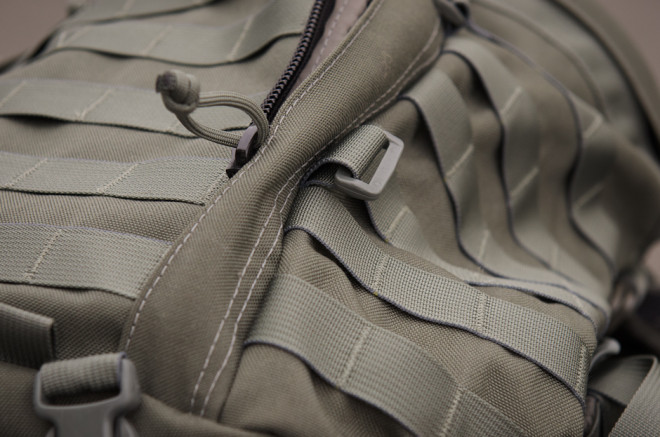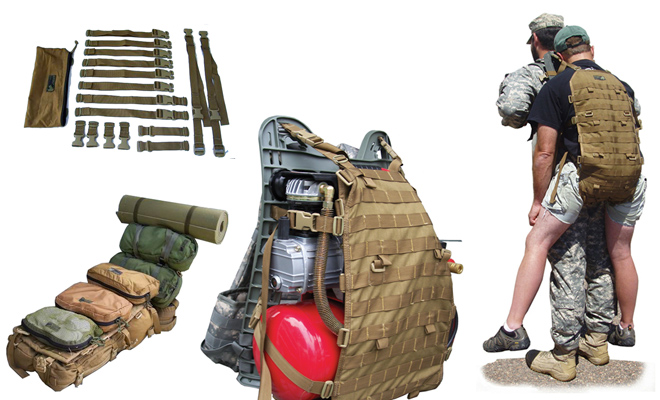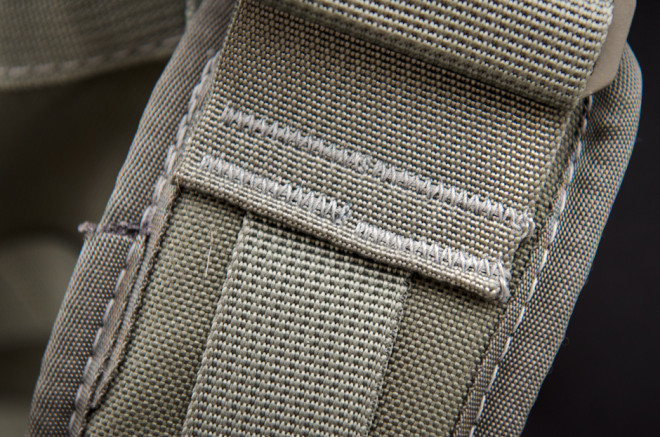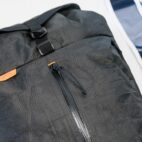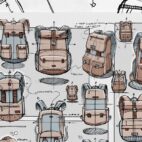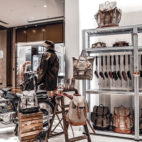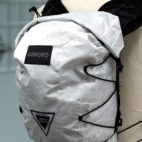Carry Conversations :: Kifaru
For our second Carry Conversation we asked Mel Terkla, one of the designers behind Kifaru’s Tactical line, a few questions about Kifaru’s place in the world of carry. Kifaru is a Colorado-based manufacturer of high-end hunting, camping & tactical bags. Their Made-In-America packs, haulers, teepees and more are also 100% Berry Amendment compliant, which means that the raw materials and components of every bag are also made in the USA. We have one of their X-Ray bags winging its way toward us as we speak, and we’re looking forward to dishing out as much punishment to it as we dare.
Patrick, the owner of Kifaru, has a long history in hunting & camping packs. What drove you to connect with him and add a military/tactical facet to Kifaru’s offerings?
In the early 2000s all the technical advances with suspension designs and internal frames were happening in mountaineering. The people making military packs were just general military manufacturers making simple packs with no frills, no suspension design, and very little attention to ergonomics or comfort. As an ex-military guy myself, I’d always wanted to see mountaineering-grade packs in the military market. Patrick Smith is one of the pioneers of the internal frame mountaineering pack, along with Dana Gleason, Wayne Gregory, Dick Kelty, the Lowe Brothers, and a few others; however, it was Kifaru’s suspension philosophy (thinner, more flexible, and more contoured suspension straps), their USA-only manufacturing and materials, and their pride in customer service that drove me to try to connect with Patrick. I contacted him in November of 2001, and we immediately understood each other’s goals and ideas.
By June 2002 we’d gone live on the website with two tactical packs and a few pockets, on the way to becoming the first mountaineering company with a full line of military packs.
There must be a major sense of responsibility making packs that go into life-threatening situations; what’s that like?
Of course I want to make sure I deliver the best possible product when people’s lives might rely on them, but when I started working on the tactical line I already had faith in Kifaru’s quality. The hunting and camping guys are way out in the backcountry and carry game out on their back in conditions that can be dangerous or deadly; when it’s -20°F and your shelter goes down, things can get bad. So no, even when I started working on the tactical line I never had to worry about something failing and putting someone in danger. Our military packs have done multiple tours in Iraq and Afghanistan and they still hold up. We’ve heard of a guy’s bag surviving being dragged three miles in the sand with a big gun strapped to it, a guy whose fully loaded bag fell 500 feet out of a helicopter and didn’t burst a single seam, and tons of other stories that confirm our faith in our products.
Do you try out other brands’ packs to benchmark your stuff? Who else is nailing it these days? Are there any designs or features you wish you’d thought of out there?
Absolutely we test everyone else’s stuff. It allows us to see what problems they’re addressing and how, gets our minds working, et cetera. Competition is great, and for us it’s usually friendly as well. Dana Gleason’s Mystery Ranch is our biggest competitor, but we respect what they’re doing a lot and send people to them for certain things, and vice versa.
Conversely, what kinds of mistakes do you see being made in carry these days? Are there things that you see other manufacturers doing that drive you nuts?
I won’t name names but there are a whole host of mistakes displayed on the wall at REI. I don’t understand why so many packs use stiff, thick waist-belts; they’re terrible for mobility, don’t allow for even distribution of weight, and cause hot spots around your iliac crest [the outer point of your hip bone]. I also don’t like seeing shoulder straps sewn straight to the top of any bag large enough to need a waist belt. Without torso-length adjustment to actually get the waist belt on your waist, those waist belts are just decoration.
“We’ve heard of a guy’s bag surviving being dragged three miles in the sand with a big gun strapped to it, a guy whose fully loaded bag fell 500 feet out of a helicopter and didn’t burst a single seam, and tons of other stories that confirm our faith in our products.”
Tons of tactical bags are being bought by college kids and city hipsters these days; do you think they’d be better served by other products or is the fact that they’re buying quality stuff the most important thing?
A lot of people buy tactical bags for aesthetics, but others do use the modularity and appreciate toughness, and I don’t know how to tell them apart so I don’t judge really… I’m always happy to see people using quality gear. That being said, tactical bags do not always signal high quality. There are a ton of offshore manufacturers that take quality tactical gear and reverse engineer cheap knockoffs to look similar, but make them poorly out of low quality materials so they can be sold for $59.99. These are just landfill waiting to happen, and God forbid someone actually rely on them in a dangerous situation. Obviously not everyone can afford a $380 Kifaru X-Ray, and there are lots of good cheaper options out there, but the folks who buy high-end tactical stuff do appreciate quality and I’m happy about that.
None of Kifaru’s offerings are particularly work-oriented, have you thought about making something in that direction? What do Kifaru employees carry to work?
We use a ton of different bags. We adapt lots of our tactical bags for EDC, and we like some tactical crossover products like TAD gear. We’re considering adding an urban line, but we’re taking our time researching. Who is the market? Will they pay for our quality? Colors? Fabric weights? Any work-oriented products we’d consider launching would have a Kifaru twist: lots of mountaineering and tactical features in an urban disguise.
We see a lot of direct-to-customer sales models when it comes to more expensive, made-in-America offerings. Are you happy with that model? Have you ever considered moving to a more traditional dealer-based model, or do the added costs outweigh the benefits?
Patrick’s first company, Mountainsmith, was based on the dealer model. I think after that he was just tired of the experience. Dealer networks mean you’re in the business of collecting debt, there’s another middleman taking his cut – our bags are expensive as it is – and there’s way less connection to customers. I have a toll-free line directly to my home, and all our customers can contact me 24/7 with any questions they might have. Also, there’s a certain level of ‘keeping up with the Joneses’ when you work with dealers. Instead of relying on solid design principles and true innovation, companies have to scramble to make sure they have more doodads than their competitors. I’m not saying it doesn’t work for some companies, but it’s not something we’d consider doing right now.
“There are a ton of offshore manufacturers that take quality tactical gear and reverse engineer cheap knockoffs to look similar, but make them poorly out of low quality materials so they can be sold for $59.99…God forbid someone actually rely on them in a dangerous situation.”
Who gives you the best feedback? Forums? Military personnel? Or do you just trust yourself to get things right as a test subject and understand the market?
Forums and blogs are huge, I can see what people love or hate, where they’re having problems with currently available gear, et cetera. Obviously you have to read between the lines a lot, but they inspire us to come up with ideas and solutions. I’ve also got great military and law enforcement contacts, who keep up with how combat is changing and how their carrying needs are changing. So yeah, we test our own stuff and I have strong visions for the products I work on, but we do work with people we trust for feedback and as beta testers.
So, Carryology readers, what do you think? Should dedicated mountaineering and tactical manufacturers like Kifaru look at working on urban EDC bags? Or would that be like turning an original Hummer into a hybrid electric vehicle?





 Carry Awards
Carry Awards Insights
Insights Liking
Liking Projects
Projects Interviews
Interviews
